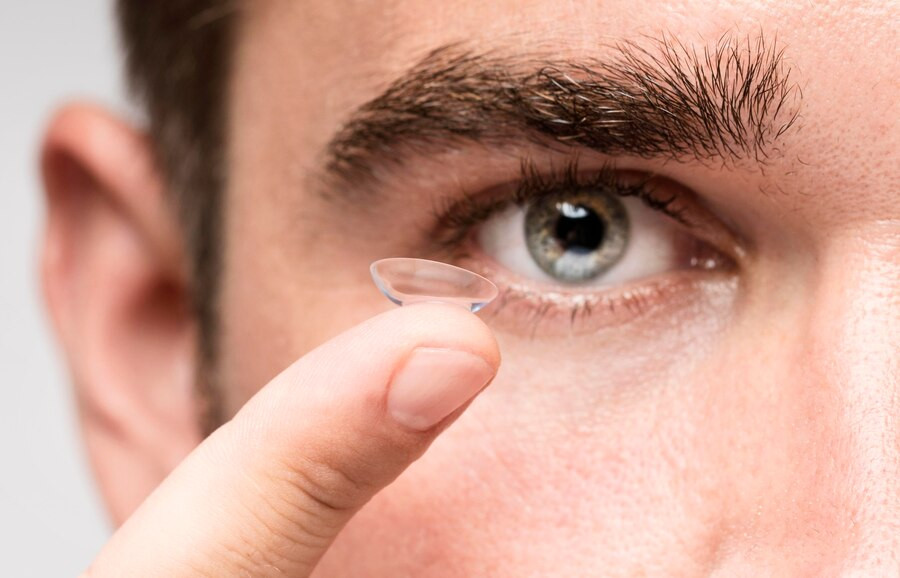Nearsightedness and astigmatism are among the most frequent eye problems in both children and adults. At first glance, the symptoms of these conditions seem similar, but they are distinct and require different approaches to treatment.
Differences Between Nearsightedness (Myopia) and Astigmatism
Nearsightedness is also known as myopia. This is a condition where a person struggles to see distant objects clearly. On the other hand, astigmatism is a disorder involving the cornea or lens, which results in improper focus of light on the retina, causing blurry vision.
Nearsightedness (Myopia)
Myopia occurs when the shape of the eye or certain parts of it cause light to refract incorrectly. Instead of focusing directly on the retina, light focuses in front of it, leading to blurred distant vision.
This condition typically develops during childhood or adolescence, becoming more stable between ages 20-40. It can be hereditary or influenced by lifestyle factors, such as:
- Frequent reading or close-up gadget use
- High screen time
- Limited time spent outdoors
Signs of myopia include:
- Blurred vision when viewing distant objects
- Squinting to improve focus
- Headaches
- Eye strain
- Frequent blinking or eye rubbing
In children, these symptoms may present as difficulty seeing the board at school or not noticing distant objects. Adults with myopia might struggle with reading road signs. Some may also experience blurred vision in low-light conditions, like driving at night, even though they see well during the day.
Nearsightedness is typically corrected with minus lens glasses, hence the term "nearsighted."
Cylindrical Eyes or Astigmatism
Astigmatism, or cylindrical eyes, is a refractive disorder where the eye's curvature is more pronounced than normal. While a healthy eye is round like a tennis ball, astigmatic eyes have an uneven curve, causing light to focus unevenly on the retina, resulting in blurred vision. Unlike myopia, the blurriness in astigmatism occurs when viewing both distant and close objects.
There are two types of astigmatism:
- Corneal astigmatism: caused by an irregular corneal shape
- Lenticular astigmatism: caused by an uneven lens shape
Some individuals may have both corneal and lenticular astigmatism.
Symptoms of astigmatism include:
- Blurred vision, especially when trying to focus on fine details
- Seeing halos or glare around lights
- Squinting to see clearly
- Headaches
- Eye strain
Children often do not recognize the symptoms of astigmatism. If your child reports blurred vision, including when looking at nearby objects, it's important to consult a doctor for a proper diagnosis.
Treatment for astigmatism usually involves wearing glasses with cylindrical lenses, although this won't correct the abnormal corneal or lens shape.
If glasses or contacts are uncomfortable, LASIK surgery might be recommended. Always consult your doctor about the best option for your eye condition.
For further advice, you can use the consultation feature in the Ai Care app, available on the App Store and Play Store.
Want to learn more about other health conditions? Click here!
- dr Hanifa Rahma
Morales-Brown, L. (2023). What are the differences between astigmatism and myopia?. Available from: https://www.medicalnewstoday.com/articles/astigmatism-vs-nearsightedness
Mayo Clinic. Nearsightedness. Available from: https://www.mayoclinic.org/diseases-conditions/nearsightedness/symptoms-causes/syc-20375556
Turbert, D. (2023). Nearsightedness: What Is Myopia?. Available from: https://www.aao.org/eye-health/diseases/myopia-nearsightedness
Mayo Clinic. Astigmatism. Available from: https://www.mayoclinic.org/diseases-conditions/astigmatism/symptoms-causes/syc-20353835#
Boyd, K. (2024). What Is Astigmatism? Symptoms, Causes, Diagnosis, Treatment. Available from: https://www.aao.org/eye-health/diseases/what-is-astigmatism












